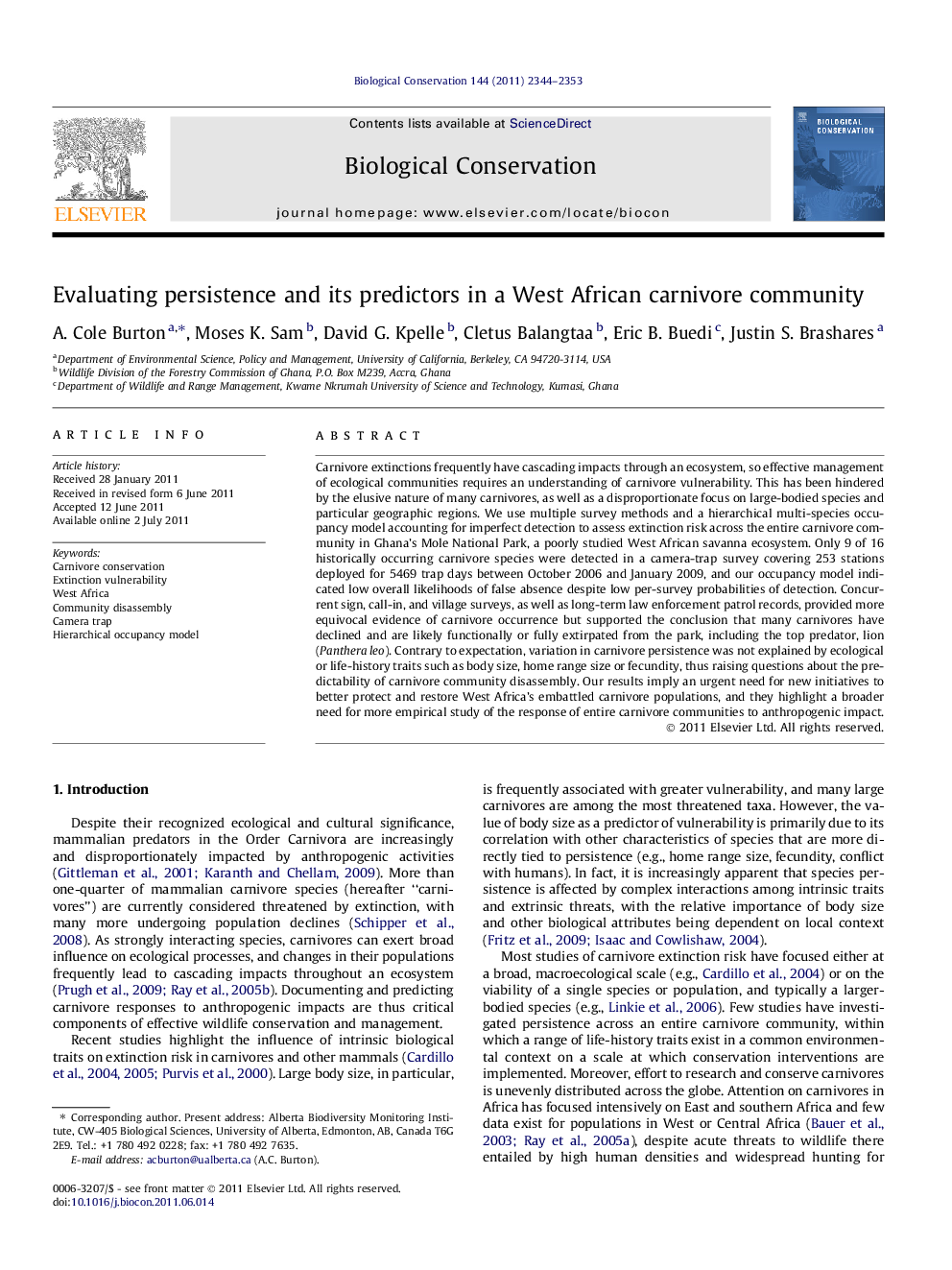| کد مقاله | کد نشریه | سال انتشار | مقاله انگلیسی | نسخه تمام متن |
|---|---|---|---|---|
| 4385556 | 1304541 | 2011 | 10 صفحه PDF | دانلود رایگان |

Carnivore extinctions frequently have cascading impacts through an ecosystem, so effective management of ecological communities requires an understanding of carnivore vulnerability. This has been hindered by the elusive nature of many carnivores, as well as a disproportionate focus on large-bodied species and particular geographic regions. We use multiple survey methods and a hierarchical multi-species occupancy model accounting for imperfect detection to assess extinction risk across the entire carnivore community in Ghana’s Mole National Park, a poorly studied West African savanna ecosystem. Only 9 of 16 historically occurring carnivore species were detected in a camera-trap survey covering 253 stations deployed for 5469 trap days between October 2006 and January 2009, and our occupancy model indicated low overall likelihoods of false absence despite low per-survey probabilities of detection. Concurrent sign, call-in, and village surveys, as well as long-term law enforcement patrol records, provided more equivocal evidence of carnivore occurrence but supported the conclusion that many carnivores have declined and are likely functionally or fully extirpated from the park, including the top predator, lion (Panthera leo). Contrary to expectation, variation in carnivore persistence was not explained by ecological or life-history traits such as body size, home range size or fecundity, thus raising questions about the predictability of carnivore community disassembly. Our results imply an urgent need for new initiatives to better protect and restore West Africa’s embattled carnivore populations, and they highlight a broader need for more empirical study of the response of entire carnivore communities to anthropogenic impact.
► We assessed extinction risk in a West African carnivore community.
► Camera trapping indicated only 9 of 16 historically occurring species persist.
► Multi-species occupancy model suggested low probability of undetected species.
► Other survey methods more equivocal but provided supporting evidence of declines.
► Variation in persistence not explained by ecological or life-history traits.
Journal: Biological Conservation - Volume 144, Issue 9, September 2011, Pages 2344–2353